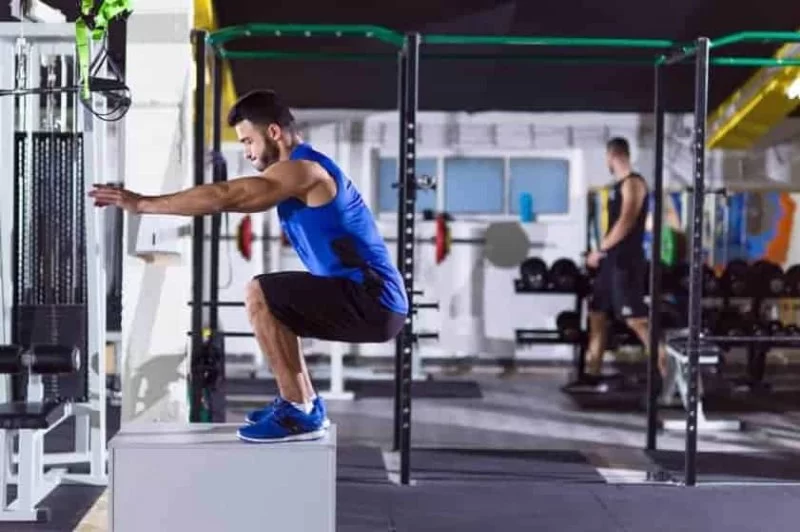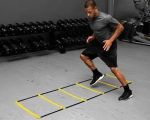
Gym Workouts for Increasing Vertical Jump: Techniques That Deliver Results
- why-vertical-jump-matters-in-sports-performance - Why Vertical Jump Matters in Sports Performance
- understanding-the-muscle-groups-behind-a-powerful-jump - Understanding the Muscle Groups Behind a Powerful Jump
- top-gym-exercises-for-increasing-vertical-jump - Top Gym Exercises for Increasing Vertical Jump
- real-case-how-darius-added-6-inches-in-90-days - Real Case: How Darius Added 6 Inches in 90 Days
- designing-a-weekly-training-routine-for-jump-gains - Designing a Weekly Training Routine for Jump Gains
- using-fitness-to-track-progress-and-get-coaching - Using Fitness to Track Progress and Get Coaching
1. Why Vertical Jump Matters in Sports Performance
Whether you're playing basketball, volleyball, football, or sprinting on the track, your vertical leap is a direct indicator of explosive lower-body power. A strong jump can be the difference between blocking a shot or missing it, reaching the rim or falling short. That’s why so many athletes focus specifically on gym workouts for increasing vertical jump—it translates to real-world performance.
2. Understanding the Muscle Groups Behind a Powerful Jump
The vertical jump isn’t just a leg movement—it’s a full kinetic chain explosion. The glutes, quadriceps, hamstrings, calves, and core all fire in sequence. You also need good ankle mobility, hip extension, and upper body counter-movement for maximum lift.
This is why gym routines need to go beyond just squats. Yes, squats help—but unless you’re training explosiveness and coordination, you're only halfway there. Plyometric work, resistance training, and controlled mobility drills together make the difference.
3. Top Gym Exercises for Increasing Vertical Jump
To maximize your vertical, incorporate the following gym exercises into your weekly training:
1. Barbell Back Squats: Deep squats build foundational leg strength, especially in the glutes and quads.
2. Romanian Deadlifts: Excellent for activating hamstrings and improving posterior chain coordination.
3. Box Jumps and Depth Jumps: Plyometric drills that develop explosive power and ground reaction time.
4. Power Cleans: Olympic lifts that train total-body power and rate of force development.
5. Bulgarian Split Squats: Target unilateral strength and hip stability, both essential for jump mechanics.
Remember, these exercises are more effective when paired with adequate rest, dynamic warm-ups, and mobility work.
4. Real Case: How Darius Added 6 Inches in 90 Days
Darius, a 17-year-old high school forward, struggled with getting rebounds despite his speed and agility. After consulting a coach through Fitness, he committed to a 12-week vertical jump program.
He focused on alternating strength and power days: squats on Mondays, box jumps and band-resisted sprints on Tuesdays, rest on Wednesdays, and heavy power cleans on Fridays. By week 8, he had gained over 4 inches. By week 12, his vertical had jumped from 22” to 28”. His coaches noticed the improvement immediately—he was blocking shots he used to miss by inches.
5. Designing a Weekly Training Routine for Jump Gains
Here’s a sample weekly gym workout structure for vertical jump improvement:
Monday: Barbell squats, Bulgarian split squats, ankle mobility drills
Tuesday: Box jumps, medicine ball throws, resisted band sprints
Wednesday: Recovery day – foam rolling, light cycling, hip mobility
Thursday: Deadlifts, step-ups, core stability work
Friday: Power cleans, depth jumps, overhead kettlebell swings
Saturday: Active play or low-intensity sports
Sunday: Full rest
Be sure to track progress weekly—jump height, reps, bar speed, and perceived exertion help guide your adjustments.
6. Using Fitness to Track Progress and Get Coaching
Progress doesn’t happen by accident. The most successful athletes document every rep and every jump. That’s where tools like Fitness come in—offering personalized coaching, video analysis, and access to specialized gym workouts for increasing vertical jump.
Whether you're training for a dunk, higher volleyball spikes, or simply greater athleticism, pairing a disciplined gym routine with professional guidance makes the climb not only faster but safer.
So lace up, get into the gym, and start jumping higher—because vertical gains aren’t just for the gifted, they’re for the prepared.








